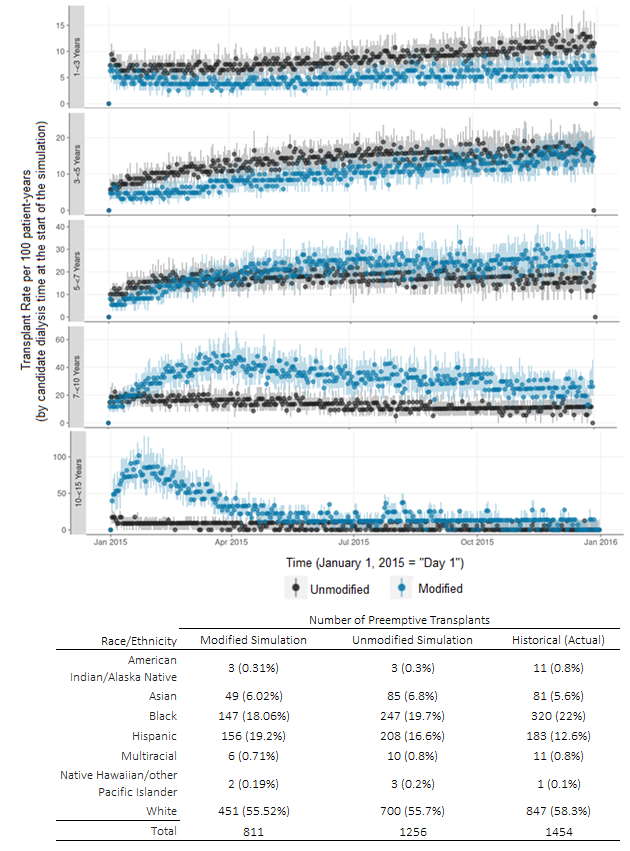What If Only Days After Dialysis Counted Towards Kidney Candidates’ Qualified Waiting Times?
Research, United Network for Organ Sharing, Richmond, VA
Meeting: 2022 American Transplant Congress
Abstract number: 705
Keywords: Allocation, Kidney
Topic: Clinical Science » Kidney » 31 - Kidney Deceased Donor Allocation
Session Information
Session Name: Kidney Deceased Donor Allocation
Session Type: Poster Abstract
Date: Saturday, June 4, 2022
Session Time: 5:30pm-7:00pm
 Presentation Time: 5:30pm-7:00pm
Presentation Time: 5:30pm-7:00pm
Location: Hynes Halls C & D
*Purpose: Current kidney policy allows patients who have not yet initiated dialysis to qualify for allocation priority based on the time since a recorded eGFR or CrCl measurement less than or equal to 20 mL/min. Since qualifying for these criteria may depends on a patient’s access to medical care, we hypothesize that the removal of these criteria could reduce certain access-to-transplant disparities, particularly those associated with a candidate’s race/ethnicity.
*Methods: We use a novel agent-based simulation model of kidney allocation—initialized with donors and candidates recovered, already waiting, or registered during 2015—to generate simulated transplants, removals, and waiting times under current policy (KAS250) versus a policy in which pre-dialysis waiting time points are not awarded (KAS250: Dialysis Time Only). Transplant rates and numbers of preemptive transplants performed (stratified by race/ethnicity) are compared and bolus effects are evaulated.
*Results: Under the modified kidney allocation policy, we observe a persistent reduction in the number of pre-emptive transplants over a simulated 365-day period compared to the control condition, with a mean difference of -445 transplants (811 versus 1256; p < 0.001). The sudden absence of priority for nondialyzed patients cause transplant rates for patients with lengthy dialysis times to increase sharply in the short term before stabilizing to new levels. Black and Hispanic candidates experience slightly elevated transplant rates (each with a 2% increase, p < 0.001), accounting for a slightly reduced rate among white candidates (a 5% decrease, p < 0.001).
*Conclusions: Changing the waiting time policy to remove allowances for nondialyzed patients shifts the balance of priority toward patients on dialysis. Short-term bolus effects reveal that patients with high dialysis times receive elevated transplant rates that restabilize within a short time. Although preemptive transplants decline under the modified policy (dropping by almost 50%) and some non-white candidates come to account for a greater proportion of preemptive transplants, the differences are small, suggesting that a policy intervention alone— without accompanying changes to listing practices—might be not be sufficient to fully address inequities related to race/ethnicity.
To cite this abstract in AMA style:
Vece GR, Lindblad K, Stuart M, Carrico B, Stewart D, Klassen D, Diallo S. What If Only Days After Dialysis Counted Towards Kidney Candidates’ Qualified Waiting Times? [abstract]. Am J Transplant. 2022; 22 (suppl 3). https://atcmeetingabstracts.com/abstract/what-if-only-days-after-dialysis-counted-towards-kidney-candidates-qualified-waiting-times/. Accessed December 14, 2025.« Back to 2022 American Transplant Congress

